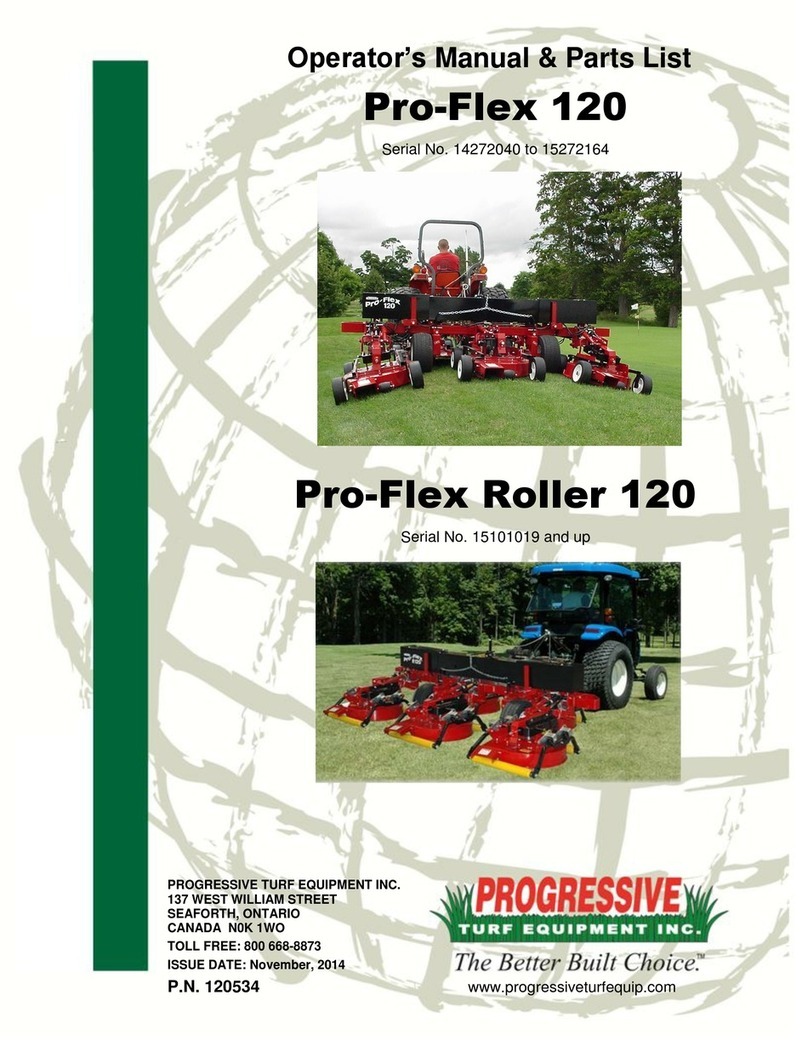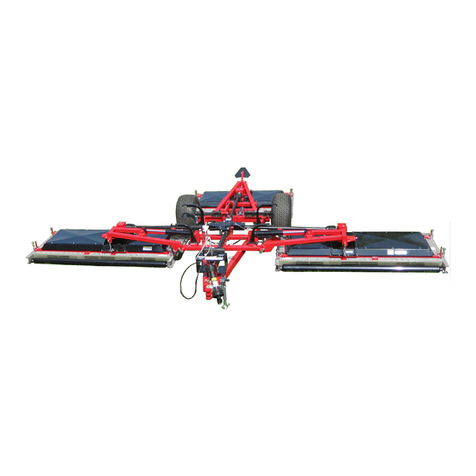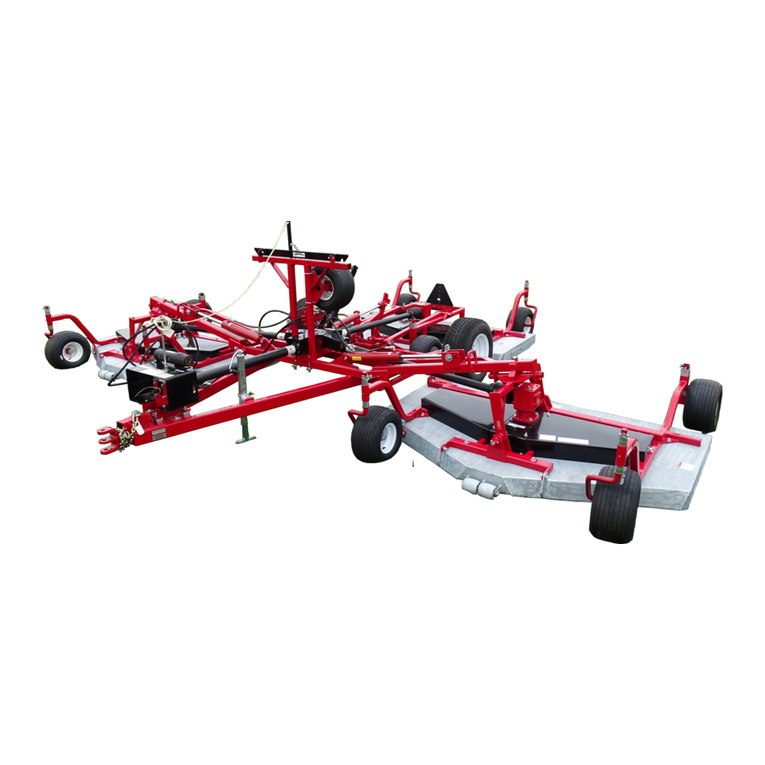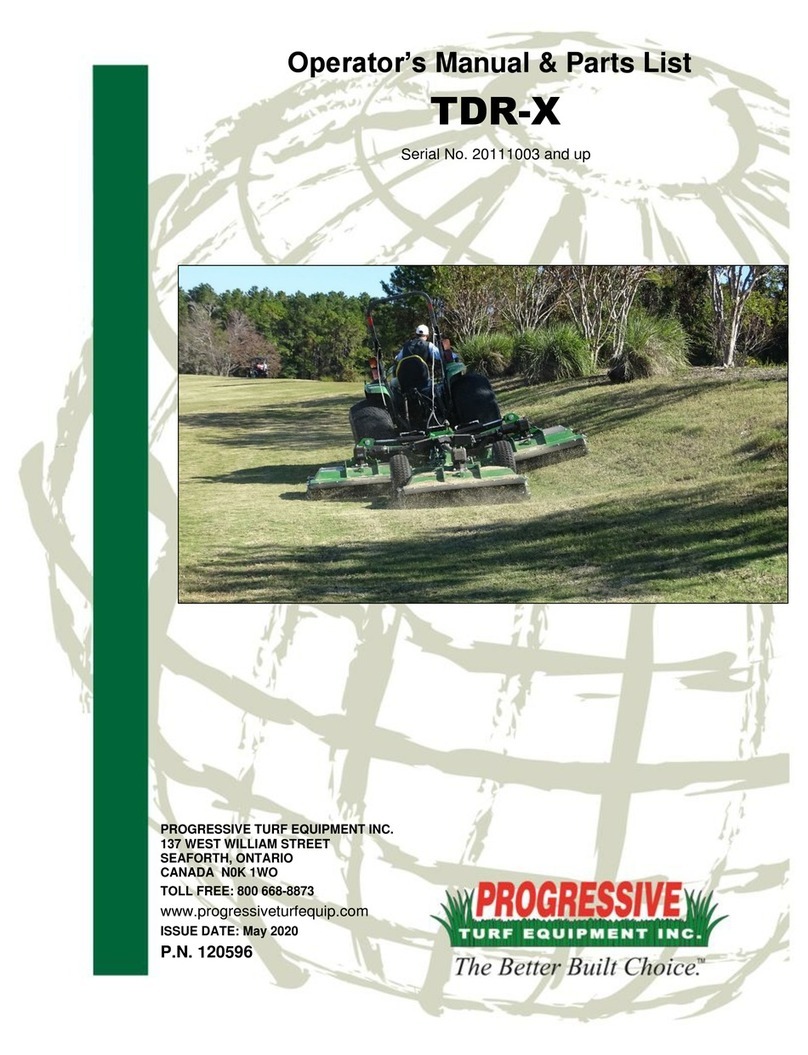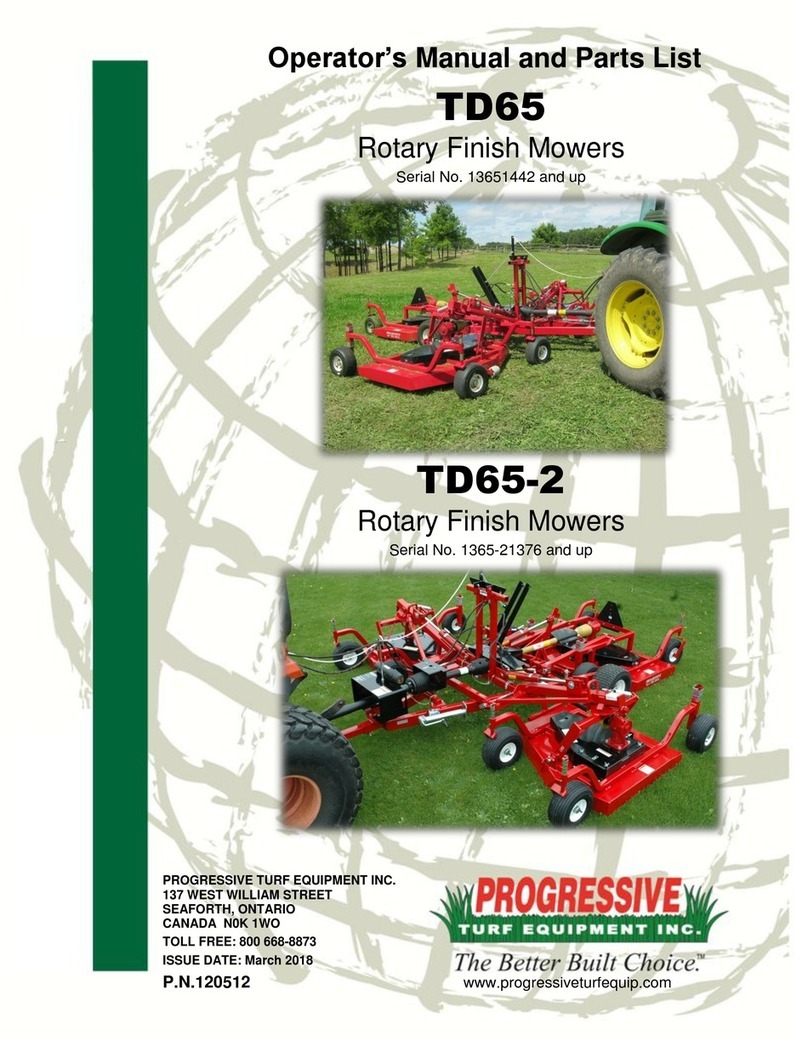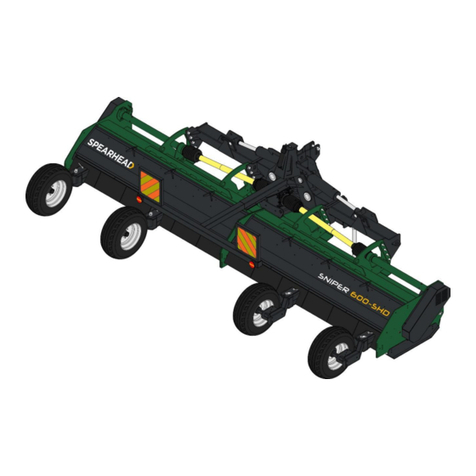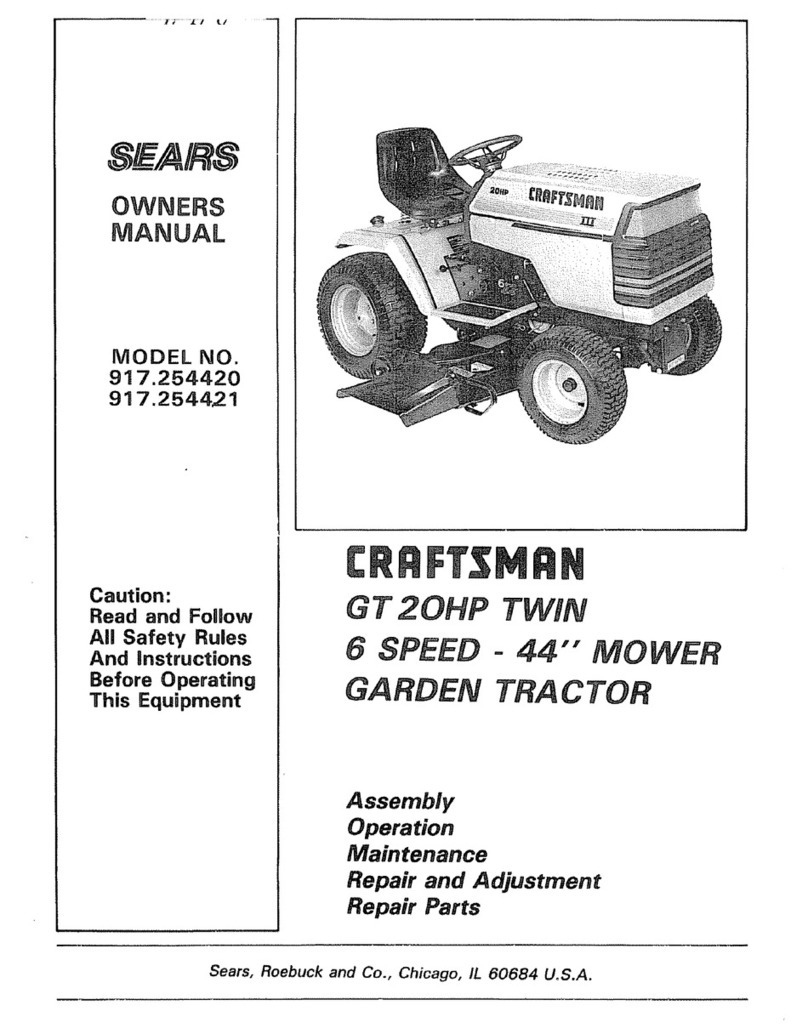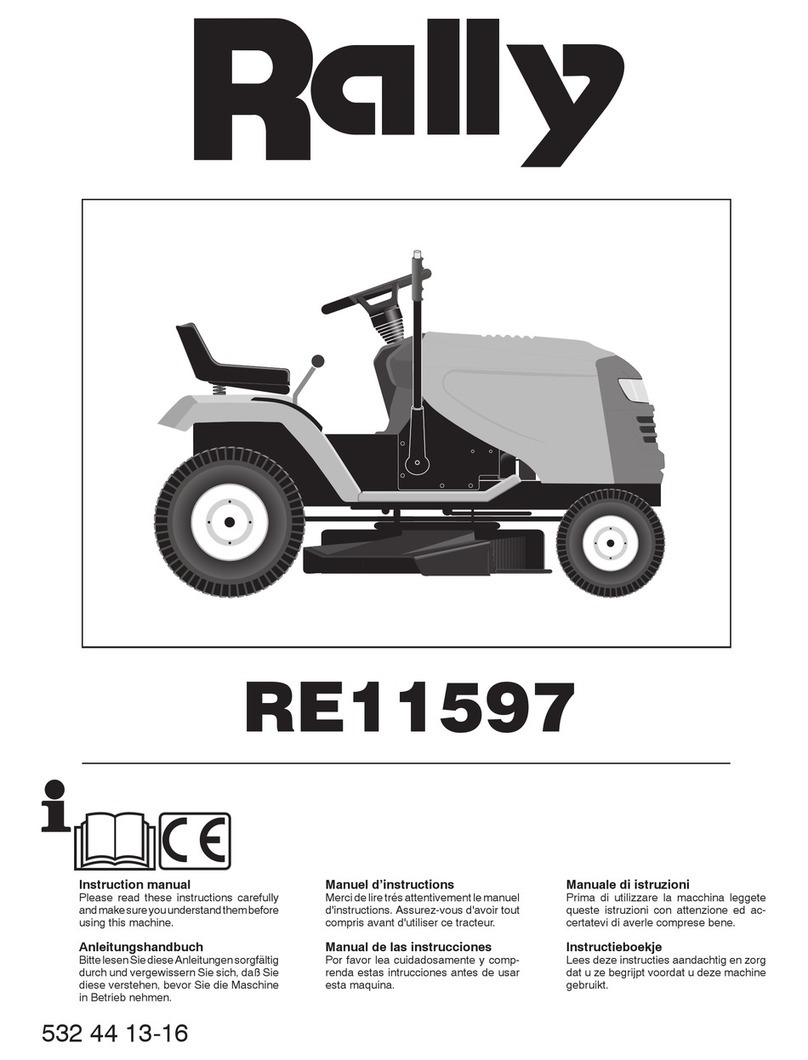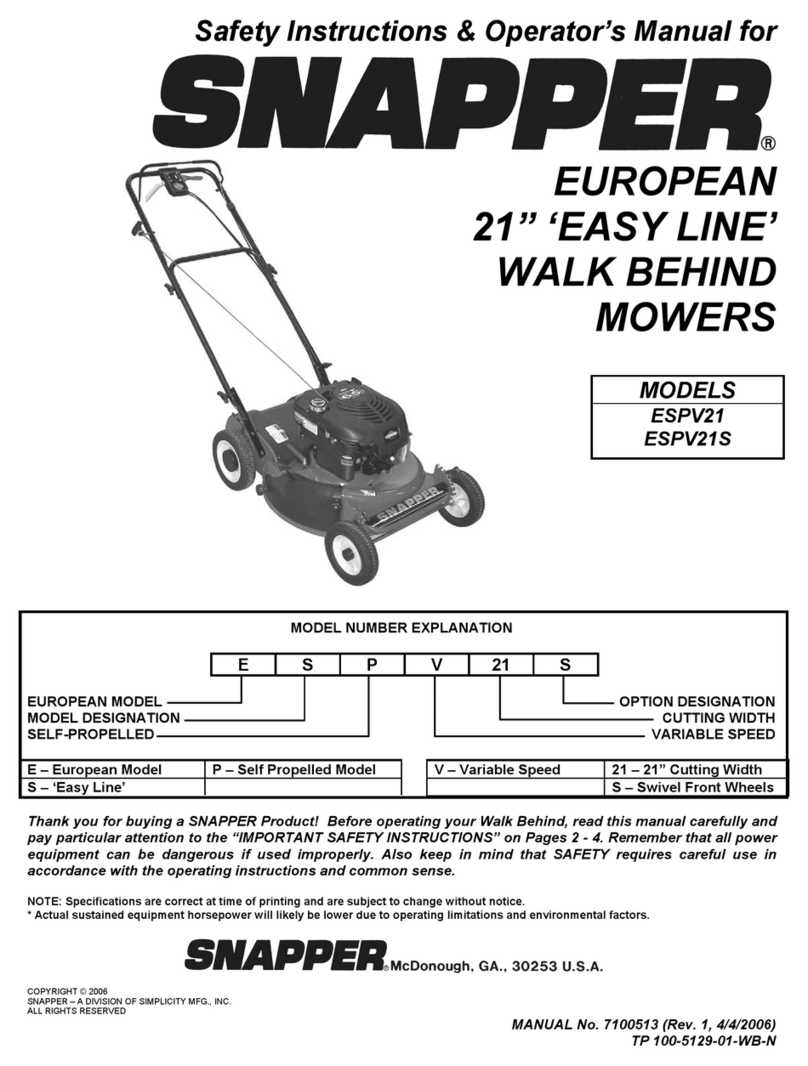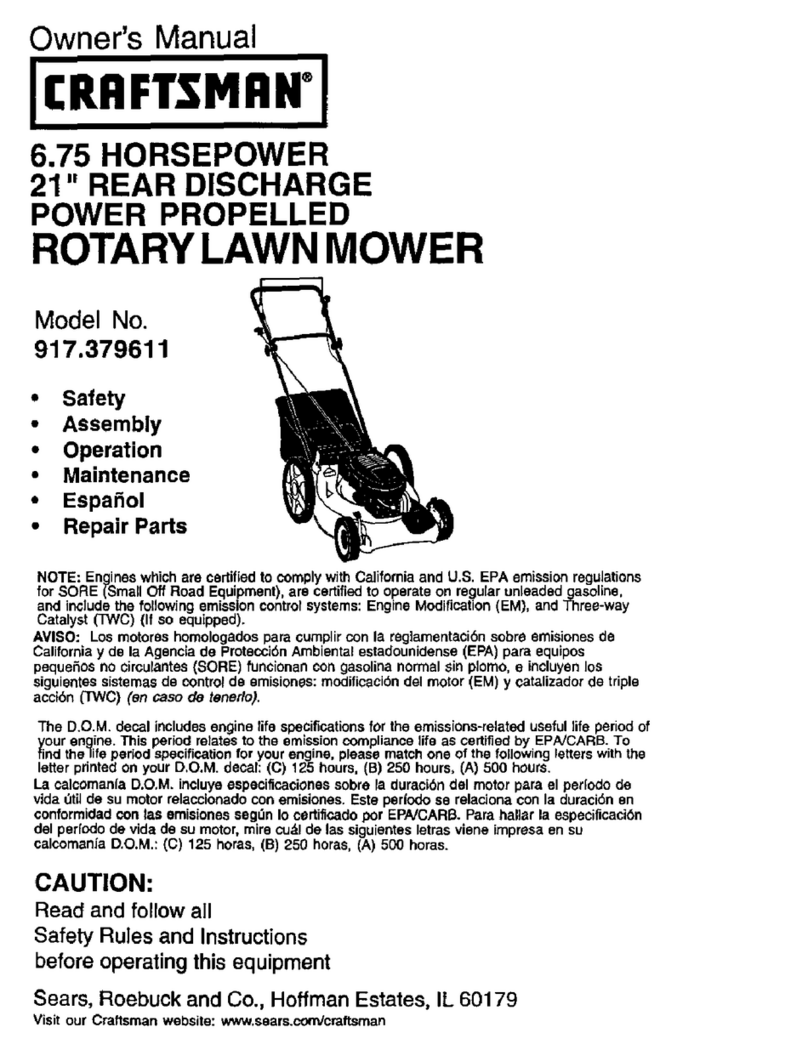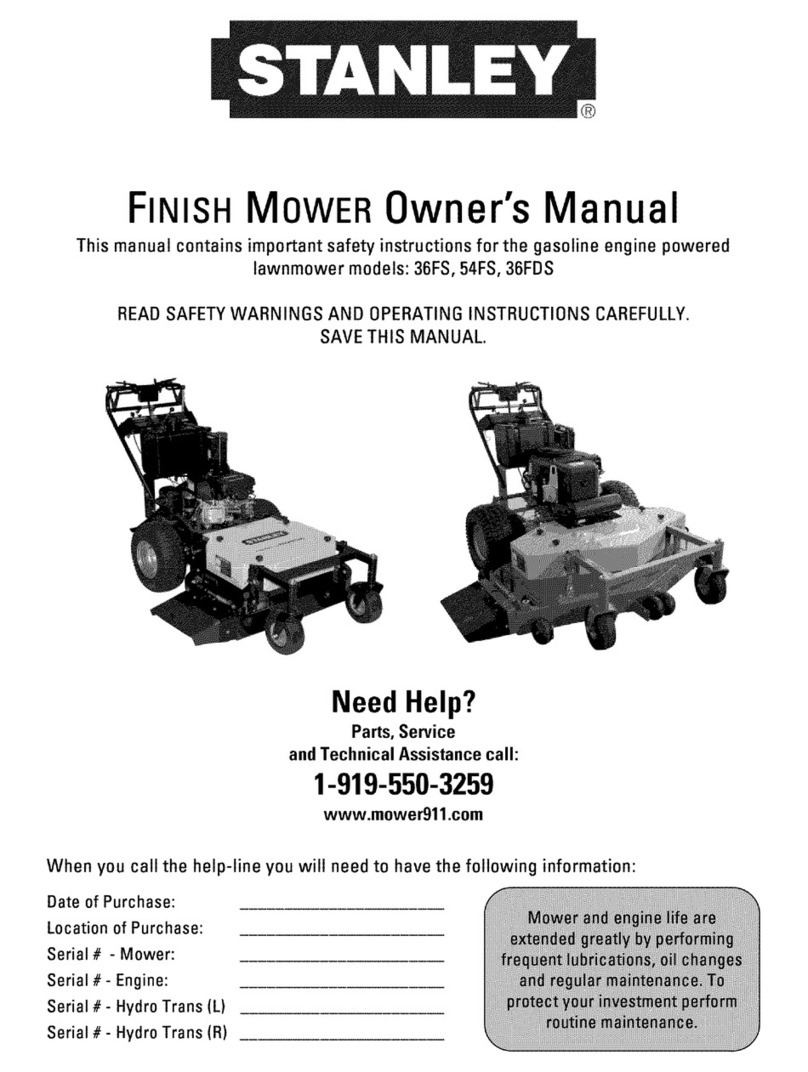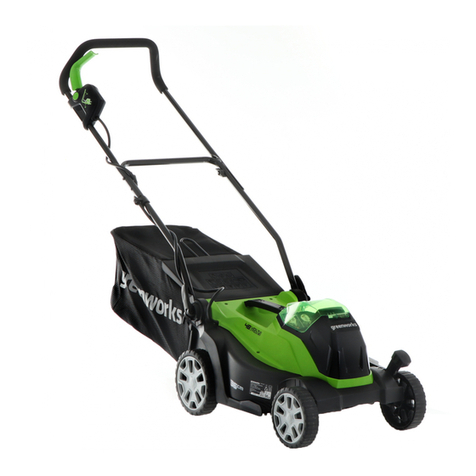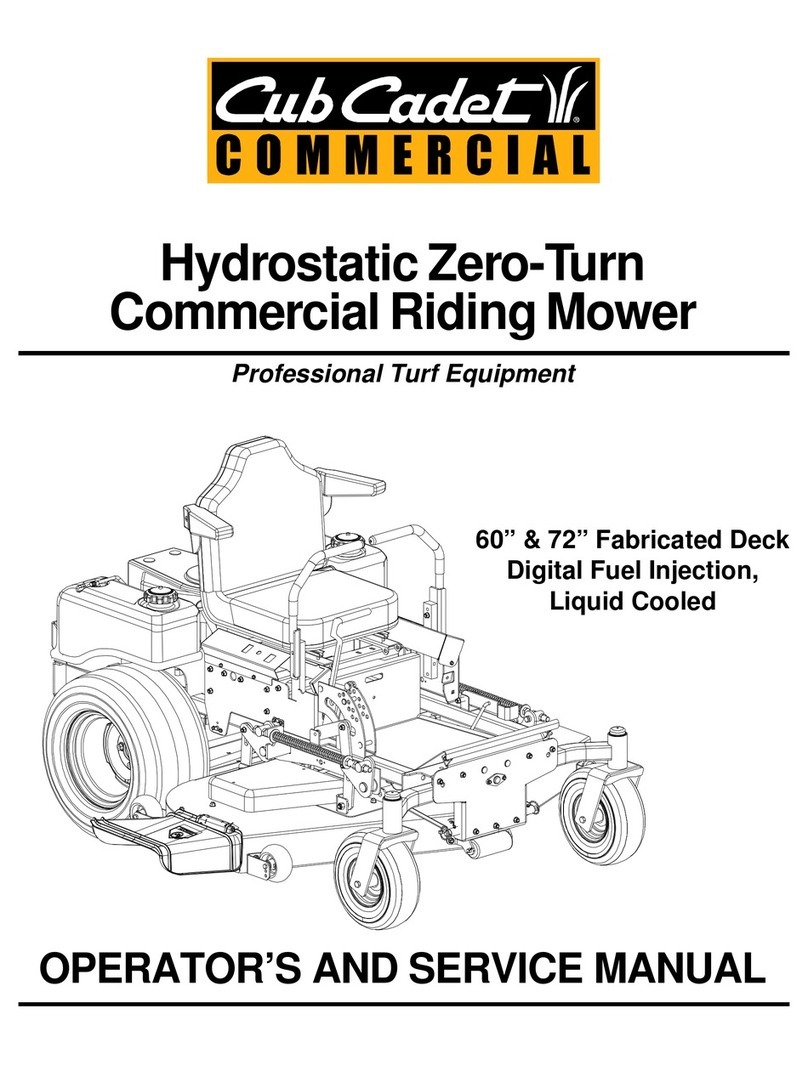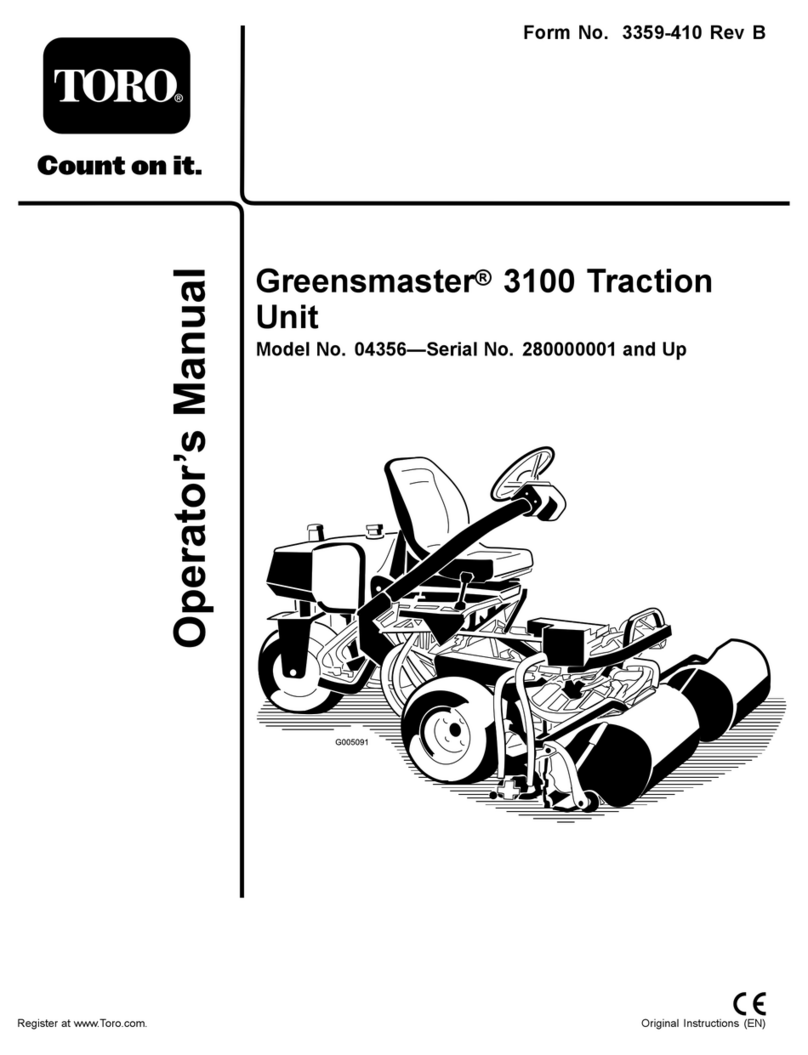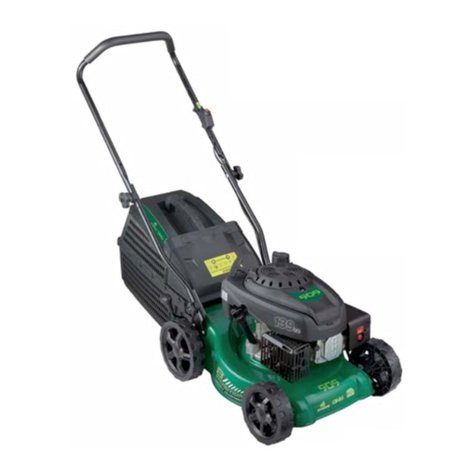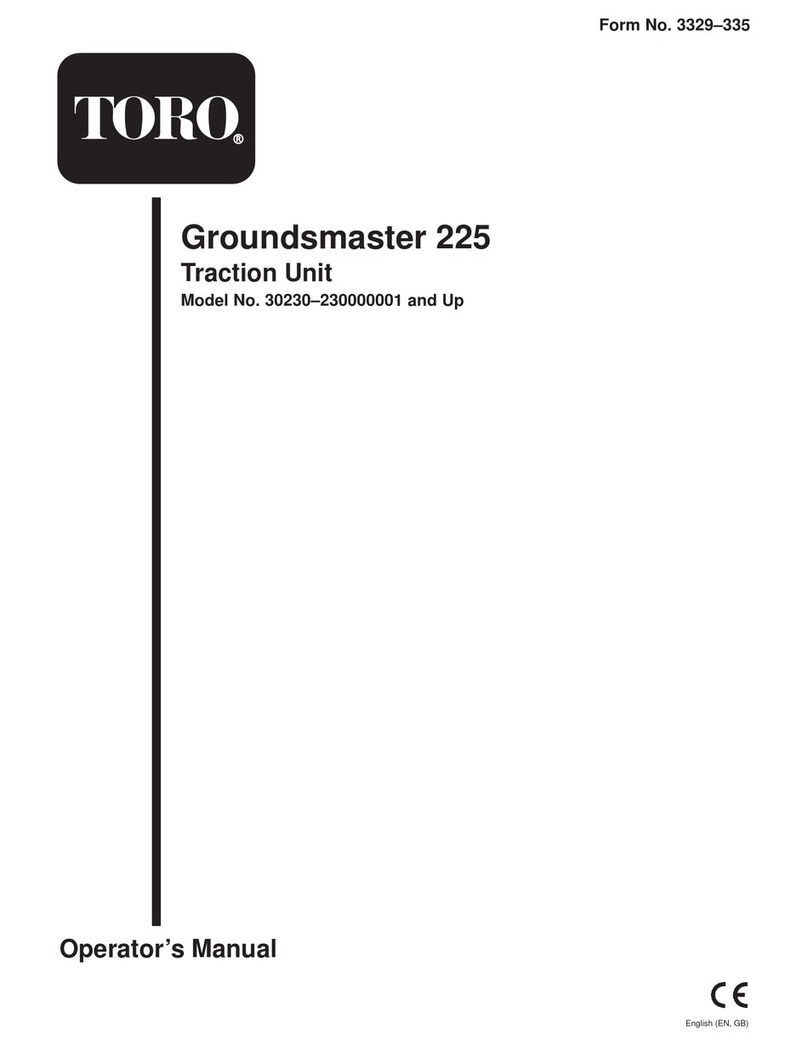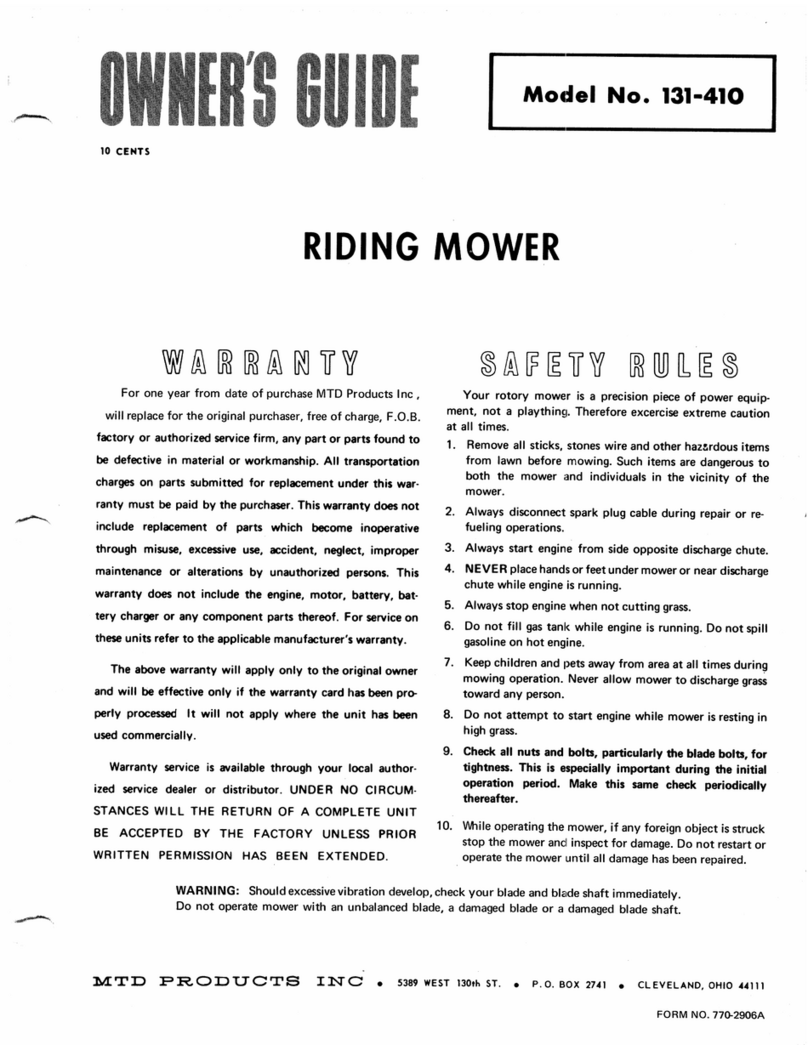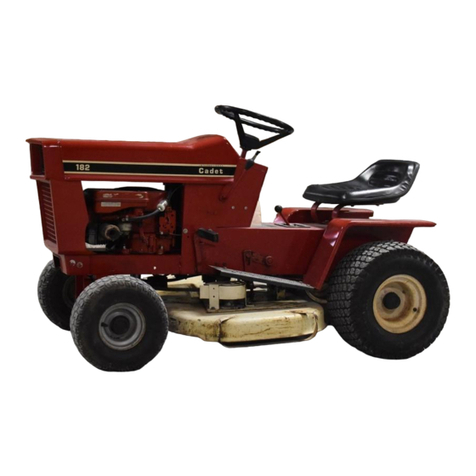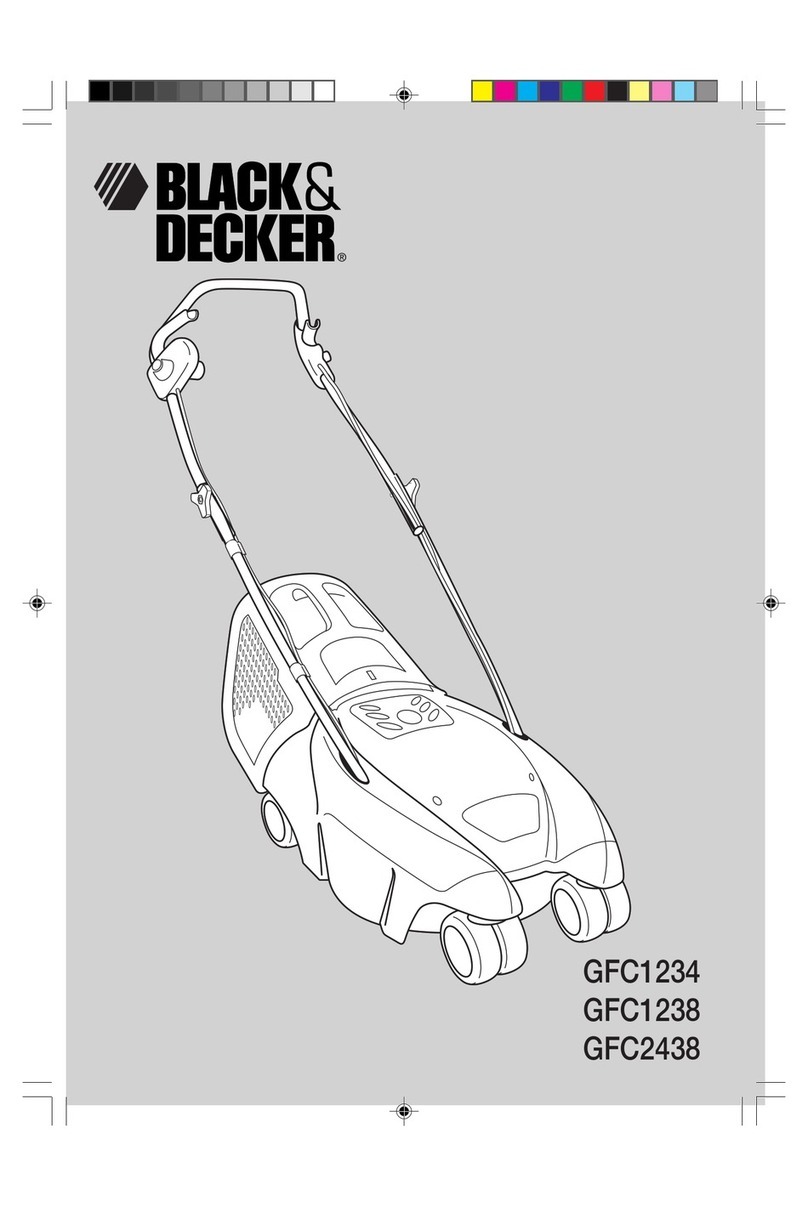Pro-Flex 120 HYDRAULIC SYSTEM TROUBLE SHOOTING 3 of 5
Step 2 Continued
STEP 2A If the drifting stops or is much slower than in STEP 1, then investigate internal leakage within the
tractors hydraulic system.
STEP 2B If the time is the same you will need test the deck lift cylinders. Move to STEP 3.
STEP 3
Determining the Deck Suspect Cylinder
As the deck cylinders are connected in a parallel circuit, (see accompanying illustrations for your Pro-Flex), they
can be tested simultaneously, saving diagnostic time. Test as instructed below.
STEP 3A When it is safe to do so, raise the all decks and
engage the deck locks. Turn off the tractor and relieve
the residual hydraulic pressure. For each deck cylinder,
remove the hose to the BASE end of the cylinder and
immediately cap the hose and plug the cylinder port and
with a suitable steel fitting, ensuring a leak free seal.
STEP 3B When it is safe to do so, restart the tractor and apply light pressure to the retract port (rod end) as if
trying to raise the decks. Do not hold over relief for long periods of time. Note the following:
•Cylinder(s) do not extend. A cylinder with a good piston seal should not extend. Investigate other
areas of leakage (i.e. ¼ turn lock valve or tractors spool valve.)
•Cylinder rod extends. If a cylinder’s piston seals are by passing internally, that cylinder will SLOWLY
extend as the pressure acts on the larger piston surface of the base end of the cylinder. Replace or
service the cylinder as deemed necessary.
oRepeat Step 3A but cap both hoses to the cylinder that extends and retest as in Step 3B to
determine if another cylinder extends to ensure that a second fault does not exist.
When the test is complete, turn off the tractor and relieve the residual hydraulic pressure and reconnect
the hoses. Cycle all decks to purge air from the system before returning the mower to service.
Pro-Flex NOT Equipped with Pro Lift-N-Turn™- prior to s/n 12271776
On older Pro-Flex 120’s prior to s/n 12271776, the wing and deck functions cannot be operated independently
of the other. In this case, the hydraulic lines to both wing lift cylinders must be first removed and plugged with
suitable steel plugs. When it is safe to do so, cycle the hydraulic system several times to purge any air that
may have entered. Then test each cylinder as described above in Step 3.
If you suspect a faulty cylinder:
•For cylinders still within the PTE warranty period, please consult PTE for direction. DO NOT
disassemble. The return of the unopened cylinder maybe required under a RGA.
•For cylinders not within the PTE warranty period, the cylinder should be disassembled and inspected
by a qualified service technician to determine the cause of the by-pass. Repair kits are available.
Always make sure that air is fully purged from the cylinder and lines and that the tractor’s
reservoir is at the proper level. Frequently check the reservoir level during testing.

